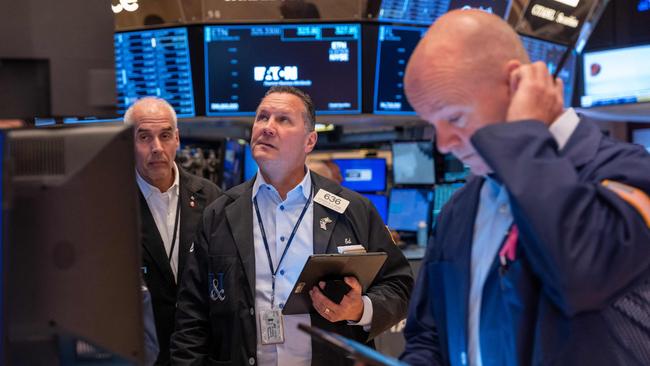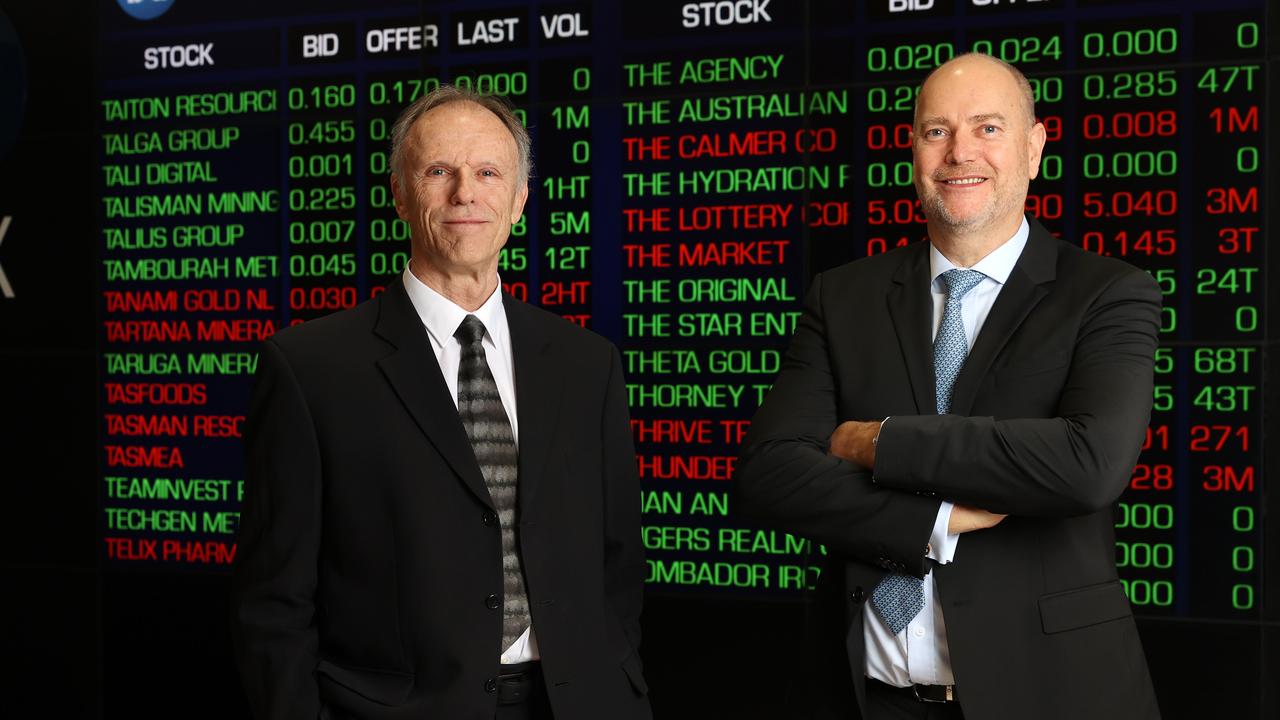Despite Nvidia’s surge, funds not too bullish yet: BofA
Nvidia has overtaken Microsoft as the world’s most valuable company, and global fund managers are still the most bullish they have been since 2021. But risk sentiment is ‘not yet extreme’, according to Bank of America.

Nvidia has overtaken Microsoft as the world’s most valuable company with a market capitalisation of $US3.34 trillion ($5.02 trillion) and global fund managers are still the most bullish they have been since November 2021. But risk sentiment is “not yet extreme”, according to Bank of America.
The risk of a correction could well be rising, but the absence of extreme bullishness in BofA’s global fund manager survey this month suggests that the global stock market can go even higher this year, despite stretched valuations in segments like US mega-cap tech and the big Australian banks.

However, the survey does throw up some “contrarian trades”, according to BofA.
Powered by a 15 per cent rise in the S&P 500, which has been driven by an 86 per cent rise in Nvidia, the MSCI World Index of Developed Markets stocks has risen 11 per cent so far this year.
The Developed Markets index is up almost 30 per cent since its last correction ended in late October.
BofA’s survey of 206 global fund managers with $US640bn under management was conducted mostly in the days before lower than expected US inflation reports boosted sentiment in stocks and bonds last week and several leading strategists boosted their target prices for the S&P 500.
The average cash level of survey respondents remained a three-year low of 4 per cent, suggesting that institutional investors have already put a lot of their cash to work in the markets.
But BofA’s “Bull & Bear Indicator” - its broadest measure of fund manager sentiment in its survey – remained some way below its sell signal threshold of 8 points after edging up to 6 points.
Fund managers’ overall equity allocation slipped to 39 per cent or 0.5 standard deviations above its long-term average, while their average bond allocation fell to minus 17 per cent, or 1 standard deviation below its long-term average and the lowest since November 2022.
BofA chief investment strategist Michael Hartnett said long bonds were now one of his “best contrarian trades” as the risk of a “hard landing” in the economy was being discounted too much.
Other contrarian trades included long crude oil as a hedge against geopolitical hedge, long utilities which will benefit if bond yields fall, and long UK-short EU stocks on election certainty.
US stocks were seen as the main beneficiary of a reallocation of money market funds according to 32 per cent of funds surveyed, but the current allocation to US stocks fell 4 percentage points month-on-month to 7 per cent overweight, the lowest allocation since October.
The long so-called “Magnificent 7”was considered to be the “most crowded trade” for a 15th consecutive month. There have only been a handful of times when a single trade was more crowded, according to Mr Hartnett.
Consistent with that, respondents favoured large-cap growth over large-cap value by about two to one, and small value and growth stocks were well down the list.
Perhaps surprisingly though the survey found funds’ overall allocation to technology stocks fell to a 20 per cent overweight, which was the lowest level since October.
That tech allocation has declined from a recent high of net 36 per cent overweight in February and was below a long-term average allocation of net 22 per cent overweight.
On the macroeconomic outlook, funds expect flat global growth over the next 12 months. However, 73 per cent of respondents said there will be no global recession in that time frame.
The average expected probability of a “no landing” in the global economy fell to 26 per cent.
A soft landing was seen by 64 per cent of respondents and only 5 per cent saw a hard landing. A soft landing will be a remarkable achievement by central banks after delivering the sharpest increase in interest rates in decades to clamp down on inflation after the pandemic stimulus.
Confidence in the macroeconomic outlook is also driving investor demand for companies to prioritise growth over balance sheet or return of capital.
The survey founds 35 per cent of funds want companies to increase capex, the highest reading since April 2022. Investors were also increasingly wanting a return of capital to shareholders, with 26 per cent of funds calling for that, the highest level since April 2015. At the same time 31 per cent said they wanted companies to improve balance sheets, the lowest since March 2022.
On US interest rates, 84 per cent of investors expected the Fed to cut rates at some point in 2024, with 39 per cent expecting the first cut to come at the September meeting, and only 8 per cent saying the Fed won’t cut in the next 12 months.
Higher inflation remained the number 1 “tail risk”, according to 32 per cent of funds surveyed, albeit it less than 41 per cent in May. Geopolitics remained the number two concern and risks associated with the US election was the third-highest risk, based on the survey.
As for the policy areas that could be most impacted by the US election, respondents pointed to trade, geopolitics, immigration, taxation, government spending, and energy.
In terms of financial risks, US commercial real estate was viewed as the most likely source of a credit event according to 32 per cent of funds surveyed, and 73 per cent of respondents viewed the US as the most likely source of a credit event.
Another 22 per cent of respondents saw the US shadow banking sector as the mostly likely source of a credit event, while 17 per cent pointed to US government debt.
It came as the Congressional Budget Office revised up the projected US budget deficit for this year was revised up 27 per cent to $US1.92 trillion or 6.7 per cent of GDP versus 6.3 per cent last year.




